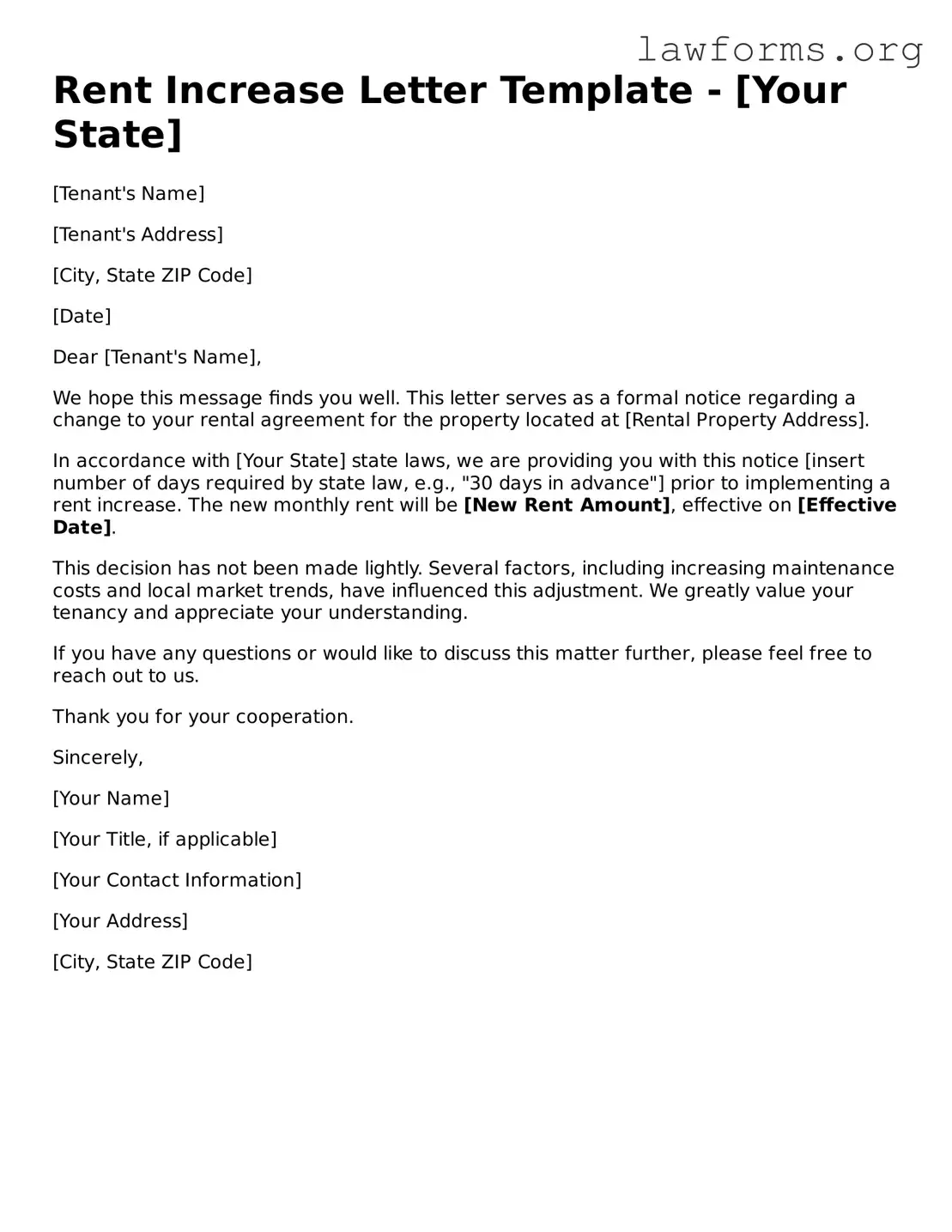Valid Rent Increase Letter Form
A Rent Increase Letter is a formal document that landlords use to notify tenants of a planned increase in rent. This letter outlines the new rent amount, the effective date of the increase, and any relevant details that tenants need to know. Understanding how to properly fill out this form is essential for maintaining clear communication between landlords and tenants.
To get started, fill out the Rent Increase Letter form by clicking the button below.
Customize Document Online
